#roman sculpture
Text
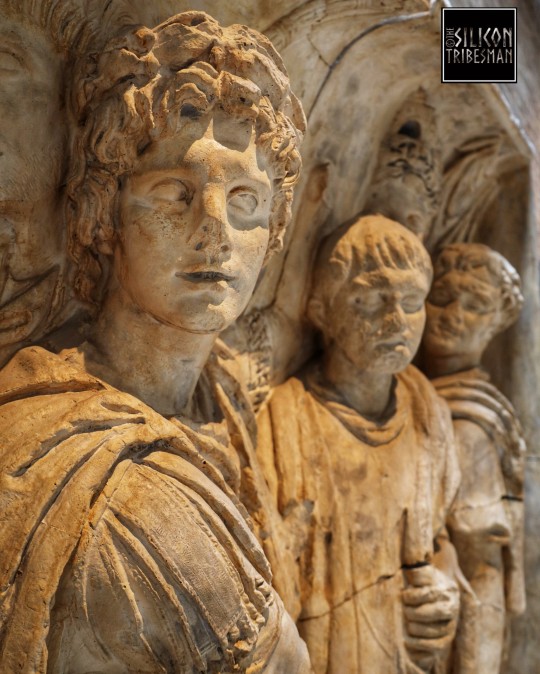


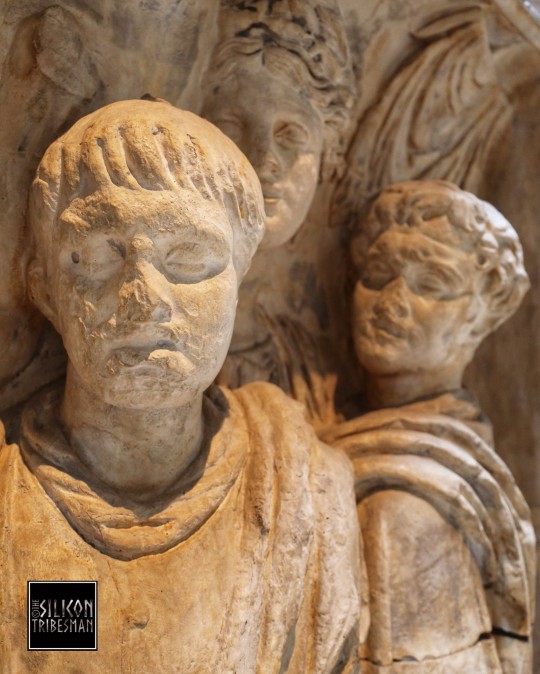
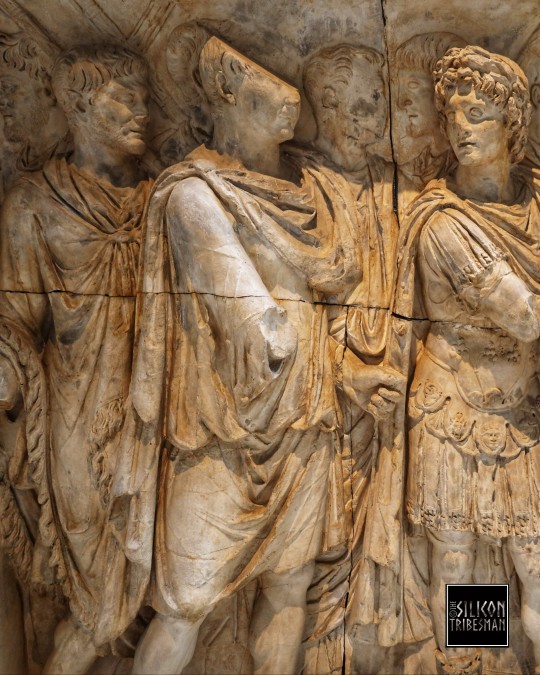

Trajan Recruits Soldiers. Arch of Trajan at Beneventum, 114 CE
A cuirassed military god in the centre presents a recruit to the roman emperor. The new soldier stands feet together: his height is being measured by a wooden frame held by the soldier on the right (in situ, west side, middle zone)
Ashmolean Museum, Oxford
#roman#romans#roman empire#roman army#roman soldiers#roman sculpture#roman craft#roman statue#roman society#trajan#ashmolean#archaeology#relic#ancient cultures#roman emperors
230 notes
·
View notes
Text
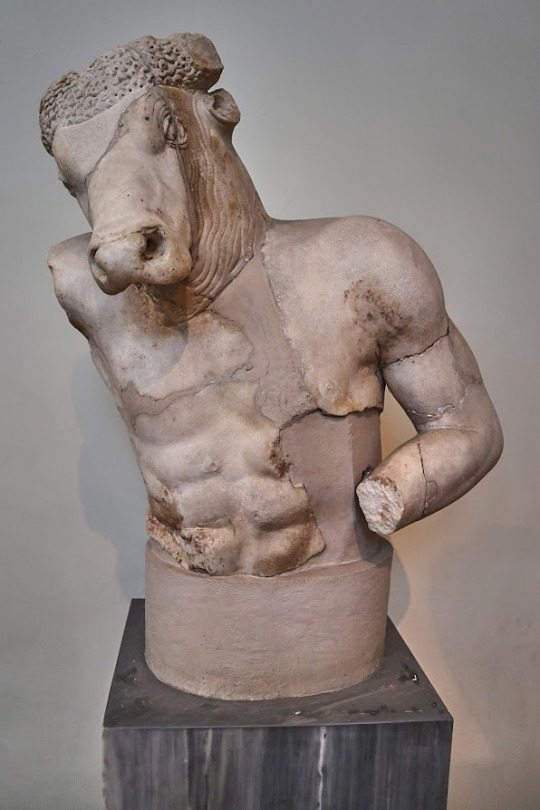
A marble sculpture of the Minotaur. A Roman copy of a Greek original by Myron. (National Archaeological Museum, Athens)
301 notes
·
View notes
Text



I've always loved how they loved
#marble statue#marble sculpture#greek mythology#bacchus#ariane#antique roman#roman sculpture#greek god#roman mythology#idgaf abiut the distinction CRY ABOUT IT#besties
192 notes
·
View notes
Text


The Hunt of the Caledonian Boar - Marble sarcophagus relief known as the Meleager Sarcophagus, c. 250-270 CE
Liebieghaus Sculpture Museum, Frankfurt, Germany
131 notes
·
View notes
Photo

Apollo Barberini - a Roman sculpture of Apollo Citharoedus dating back to the 1st or 2nd century. It is possible that the original statue was installed in the temple of Apollo Palatinus in Rome while this might be a copy, though this is unclear.
Photo credit: F. Tronchin
#AES : ANTIGÜEDADES 💎#ancient roman art#ancient roman sculpture#roman art#roman sculpture#apollo#apollo citharoedus#apollo statue#ancient art
186 notes
·
View notes
Text

This is a reconstruction of the Belvedere Apollo that I did last semester for a class on Roman sculpture if y’all want the report that I wrote for it lemme know. Fun fact: most (if not all) statues from antiquity would be painted!
#I’m sorry I don’t know how to censor this properly#art#art history#illustration#archaeology#apollo#statue#sculpture#classics#roman art#roman sculpture#greek mythology#roman mythology#reconstruction#my art#digital art#procreate
113 notes
·
View notes
Text

A ROMAN BRONZE THEATRE MASK
CIRCA 1ST-2ND CENTURY A.D.
4 5/16 in. (10.9 cm.) high.
#A ROMAN BRONZE THEATRE MASK#CIRCA 1ST-2ND CENTURY A.D.#sculpture#roman sculpture#ancient artifacts#archeology#archeolgst#history#history news#ancient history#ancient culture#ancient civilizations#ancient rome#roman history#roman empire#roman art
64 notes
·
View notes
Text






„Busts” - Museo Pio Clementino, Vatican
#busts#museum pio clementino#pio clementino#vatican#rome art#rome#ancient rome#italiy#italian art#italian architecture#roman sculpture#sculpting#sculpture#baroque architecture#baroque#baroque sculpture#art#art history#artistic#artwork#architecture#roman statue#roman empire#ancient art#darkest academics#darkest academia#dark academia aesthetic#dark academia#light academia#light acadamia aesthetic
117 notes
·
View notes
Text
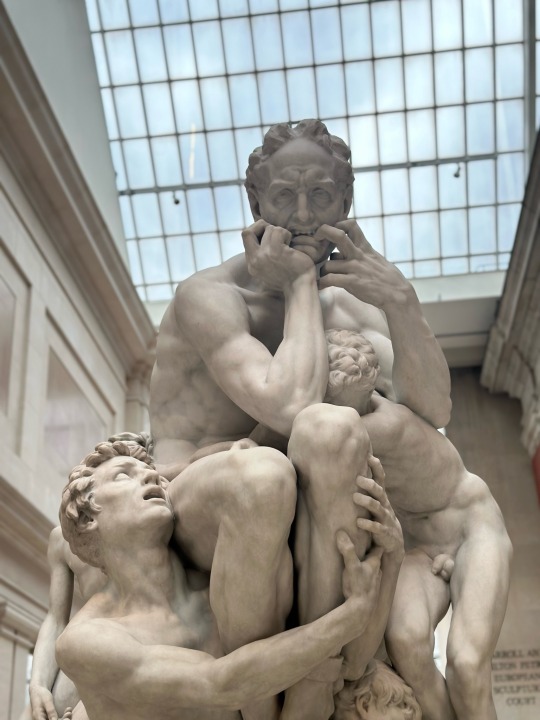


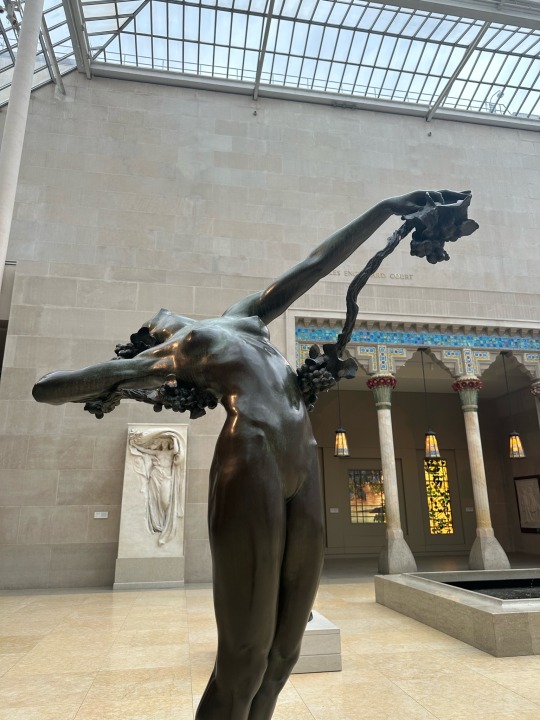
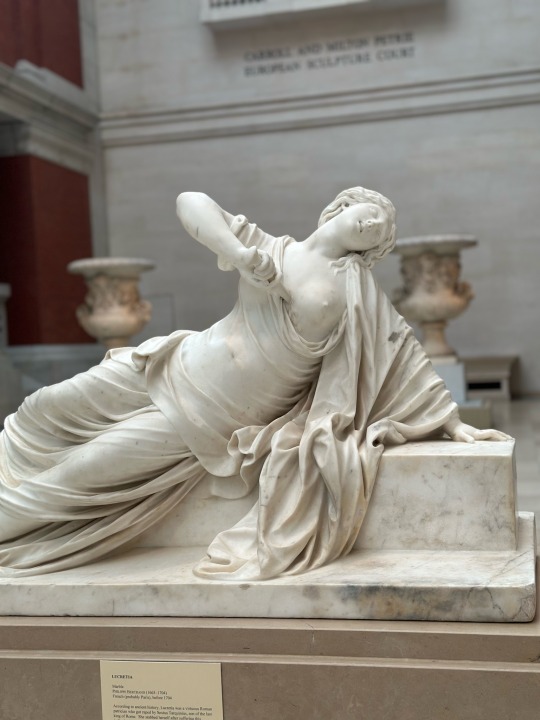
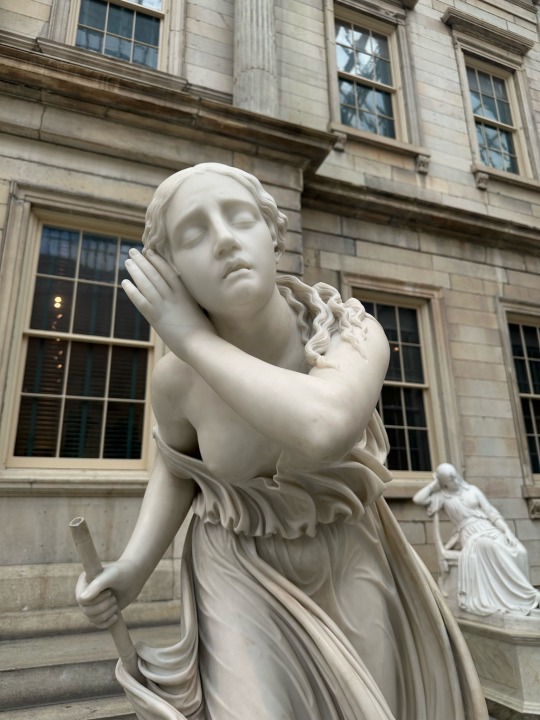


📍Metropolitan Museum (MET), New York 🇺🇸
#met#the metropolitan museum of art#new york#met new york#nyc#new york city#usa#mitologia greca#greek sculpture#classical art#roman sculpture#lucretia#perseus and medusa#magritte#ugolino and his sons#sculture#sculpture
9 notes
·
View notes
Text
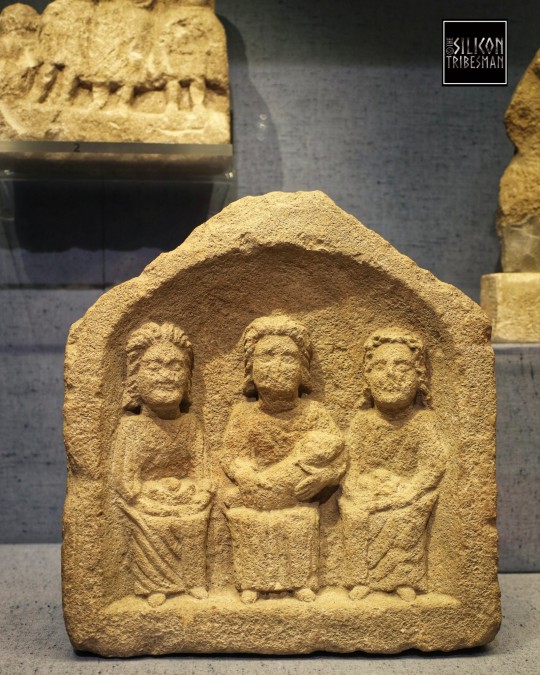


Roman Classical Style Relief of the Three Mother Goddesses found in Cirencester Centre, Corinium Museum, Cirencester
#romans#roman#roman empire#roman sculpture#mother goddess#roman religion#Roman belief#roman deities#archaeology#stone#sculpture#Corinium#Cirencester#ancient cultures#ancient living#ancient craft
55 notes
·
View notes
Photo
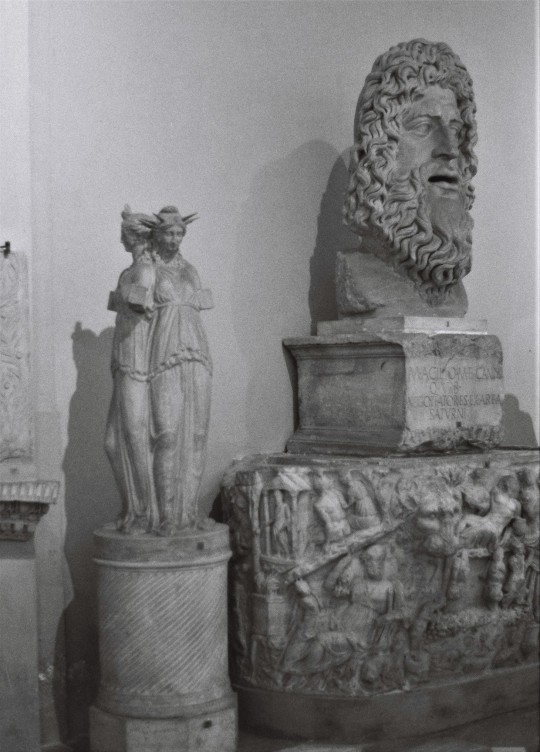

Inv.-Nr. 1922, Museo Chiaramonti, Rome
triple-bodied Hecate
Roman copy (early third century) after an original of the Hellenistic period
Ancient chthonic goddess, daughter of the Titan Perses and Asteria, originating from Caria; very diverse in her functions. She helps kings in the administration of justice, people in counselling and war, protects hunting and fishing, helps women in childbirth and raising children, protects gates and paths (often with haunting), therefore with a ghostly character and goddess of folk superstition, accompanied by the souls of the violently dead; according to Hesiod, she is directly descended from the Titans; she is related to the underworld and to magic; she is often depicted as a circular group of three female figures with their backs turned to the centre, each carrying a torch and accompanied by a dog; howling dogs announced her nocturnal approach; patroness of magic and superstition until the Middle Ages; also represented in the great frieze of Pergamon
#ancient rome#museo chiaramonti#hecate#hellenistic#goddess#titans#underworld#magic#greek mythology#hekate#witch#roman sculpture#ancient greece
84 notes
·
View notes
Text



ARTEMIS Statue:
"A young girl of unknown identity is portrayed as the goddess Artemis, dressed in a short high-girdled chiton [tunic] and hunting boots.
The figure is reconstructed with her right arm raised up in the act of taking an arrow from her quiver.
She was accompanied by a dog, traces of which still remain near her leg.."
[txt ©MNR Palazzo Massimo]
Greek marble,
Found in Ostia near Rome [1921]
1 AD.
Palazzo Massimo, Museo Nazionale Romano | MNR PM
[Ground Floor, Galleria II.]
• Web : https://museonazionaleromano.beniculturali.it/en/palazzo-massimo
• FB : https://www.facebook.com/MNRomano
• IG : @museonazionaleromano
• X : @MNR_museo
MNR PM | Michael Svetbird phs©msp | 06|23 6200X4100 600 [I., II.]
The photographed object is collection item of MNR PM, photos are subject to copyrights.
[non commercial use | sorry for the watermarks]
📸 Part of the "Reliefs-Friezes-Slabs-Sculpture" MSP Online Photo-gallery:
👉 D-ART:
https://www.deviantart.com/svetbird1234/gallery/72510770/reliefs-friezes-slabs-sculpture
.
#rome#roman#palazzo massimo#museo nazionale romano#massimo#sculpture#ancient sculpture#roman sculpture#statue#artemis#άρτεμις#artemide#artemida#goddess#antiquity#archaeology#ancient#ancient world#museology#museum#mythology#heritage#art history#archaeology art#classical art#art photography#archaeology photography#sculpture photography#museum photography#michaelsvetbird
14 notes
·
View notes
Text
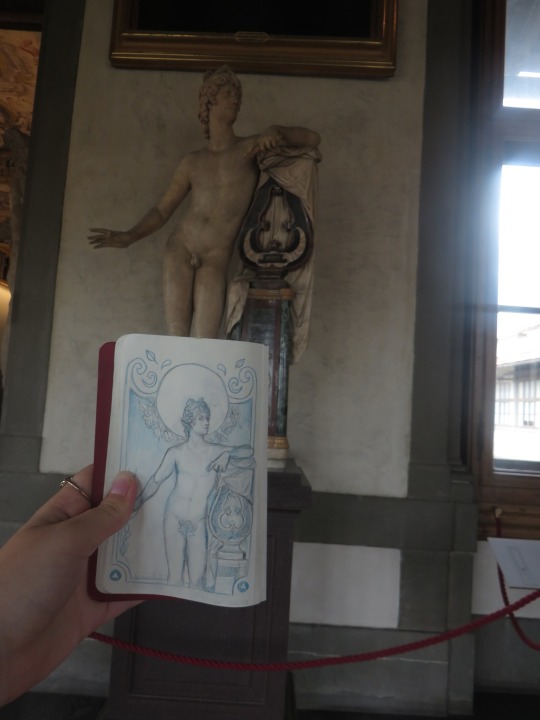
Apollo Sauroctono sketch in the Uffizi Musei, Florence ✏️
#sketch#apollo#lord apollo#apollon#apollo sauroctono#uffizi#firenze#florence#sculpture#roman sculpture#art nouveau#greek mythology#greek mythology art#roman mythology#roman mythology art
286 notes
·
View notes
Photo




Colossal Male Torso, 1st century, Roman, found in Catania in 1737
Museo Civico al Castello Ursino - Catania, Sicily
Photos by Charles Reeza
32 notes
·
View notes
Text
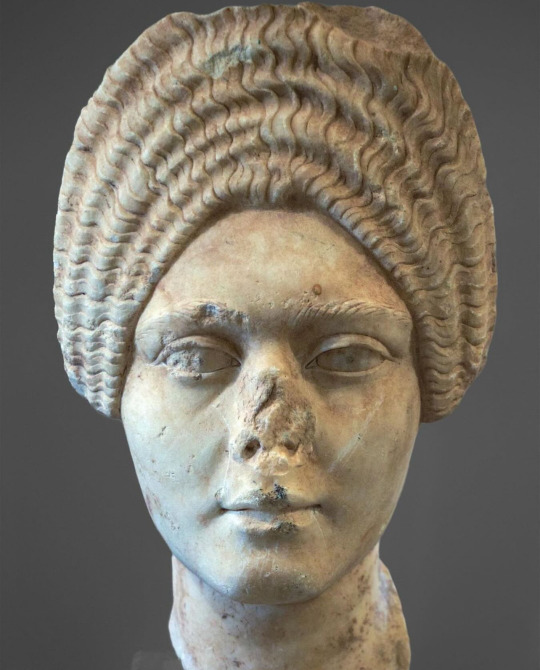
Portrait of a young woman
#dark academia#dark academia aesthetic#sculpture#classical art#classicism#archaeology#Helladic area#roman sculpture#Roman#Trajanic period
7 notes
·
View notes
Photo

A ROMAN MARBLE TORSO OF THE DIADUMENOS OF POLYKLEITOS
CIRCA 1ST CENTURY B.C.-1ST CENTURY A.D.
30 in. (76.2 cm.) high.
This superb muscular torso can be recognized as a Roman copy of Polykleitos’ Diadumenos, or fillet-binder, one of the most celebrated sculptures from antiquity. The pelvic thrust to the left and the accompanying curvatures of the lower abdomen, plus the articulation of the shoulders resulting from the arms once being raised, are all exactly matched on several more complete versions of the now-lost original (for the best preserved example see the figure from Delos, now in Athens, pl. 176 in H. Beck, P.C. Bol, and M. Bückling, Polyklet, Der Bildhauer der griechischen Klassik).
The Diadumenos is referred to by the Roman writers Lucian, Pliny, and Seneca, who praised it for its beauty and value. The original does not survive, but based on these literary descriptions, it is securely recognized in Roman copies. Where the original once stood and what precisely was depicted is not known, and the ancients are quiet on these points. Undoubtedly, Polykleitos' creation was in bronze, and would have been commissioned to celebrate an athletic victory and set up in one of the Panhellenic sanctuaries.
Polykleitos was one of the most famous and influential sculptors of the High Classical period. A native of Argos in the Peloponnesus, his artistic career flourished from circa 450-420 B.C. In addition to the Diadumenos, several other of his works are described in ancient literature and are recognized in surviving Roman copies, including the Doryphoros or Spear-Bearer, as well as his Kyniskos, identified as the Westmacott Athlete since the 19th Century. His Amazon of Ephesus was famed for having been chosen in a competition over works by the sculptors Pheidias and Kresilas, while his most magnificent creation was the colossal gold and ivory cult statue of Hera from the Heraeum of his native Argos. Pliny tells us that Polykleitos wrote about his theories of rhythm and proportion. This sculptural Canon emphasized the juxtaposition of antithetical pairs, such as right and left, straight and curved, relaxed and tensed, rest and movement. The Doryphoros is considered the embodiment of Polykleitos's canon, while the Diadumenos beautifully demonstrates the canon's "inexhaustible possibilities".
#A ROMAN MARBLE TORSO OF THE DIADUMENOS OF POLYKLEITOS#CIRCA 1ST CENTURY B.C.-1ST CENTURY A.D.#marble#marble sculpture#roman sculpture#ancient sculpture#ancient artifacts#archeology#archeolgst#history#history news#ancient history#ancient culture#ancient civilizations#anicent rome#roman history#roman empire#roman art
110 notes
·
View notes